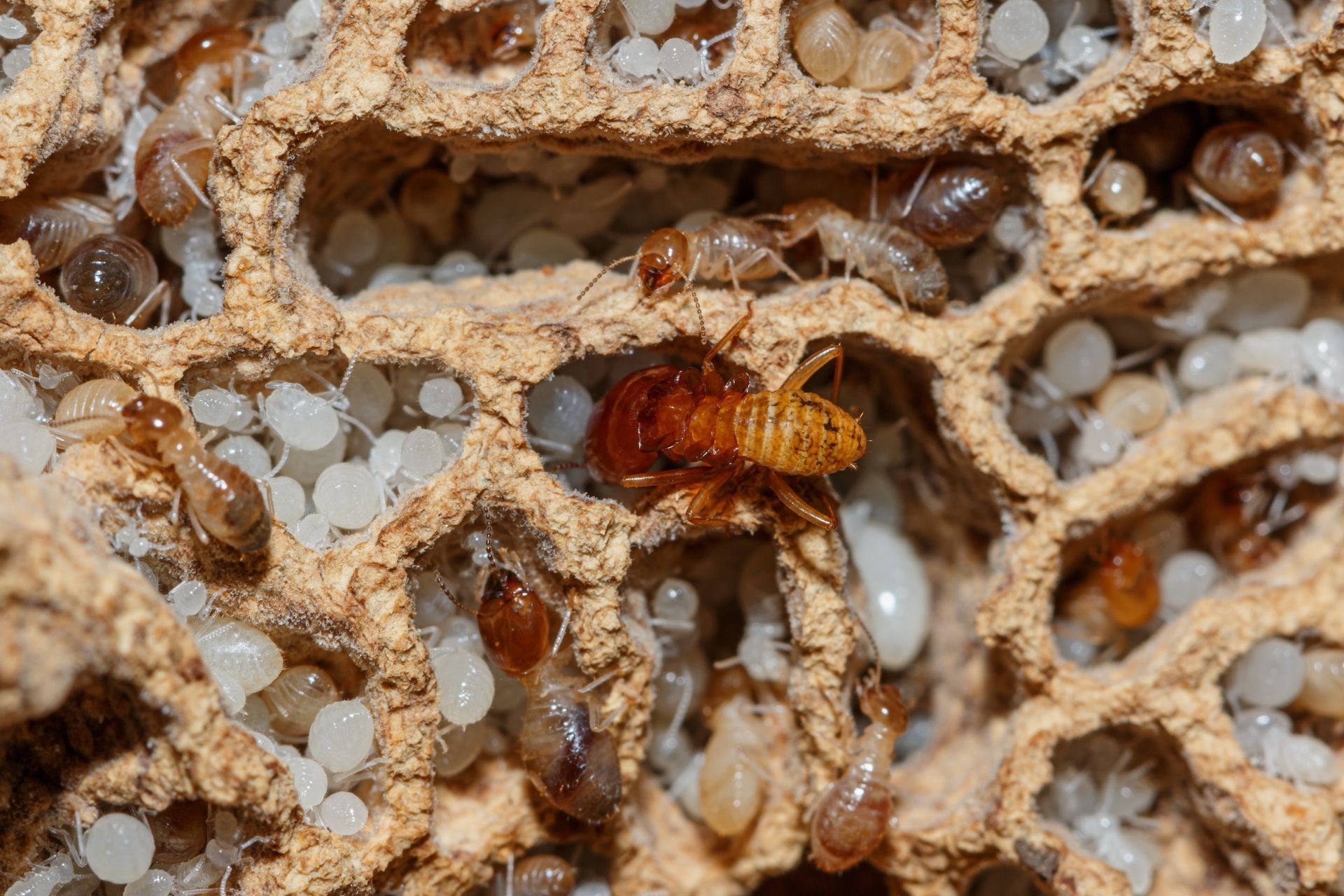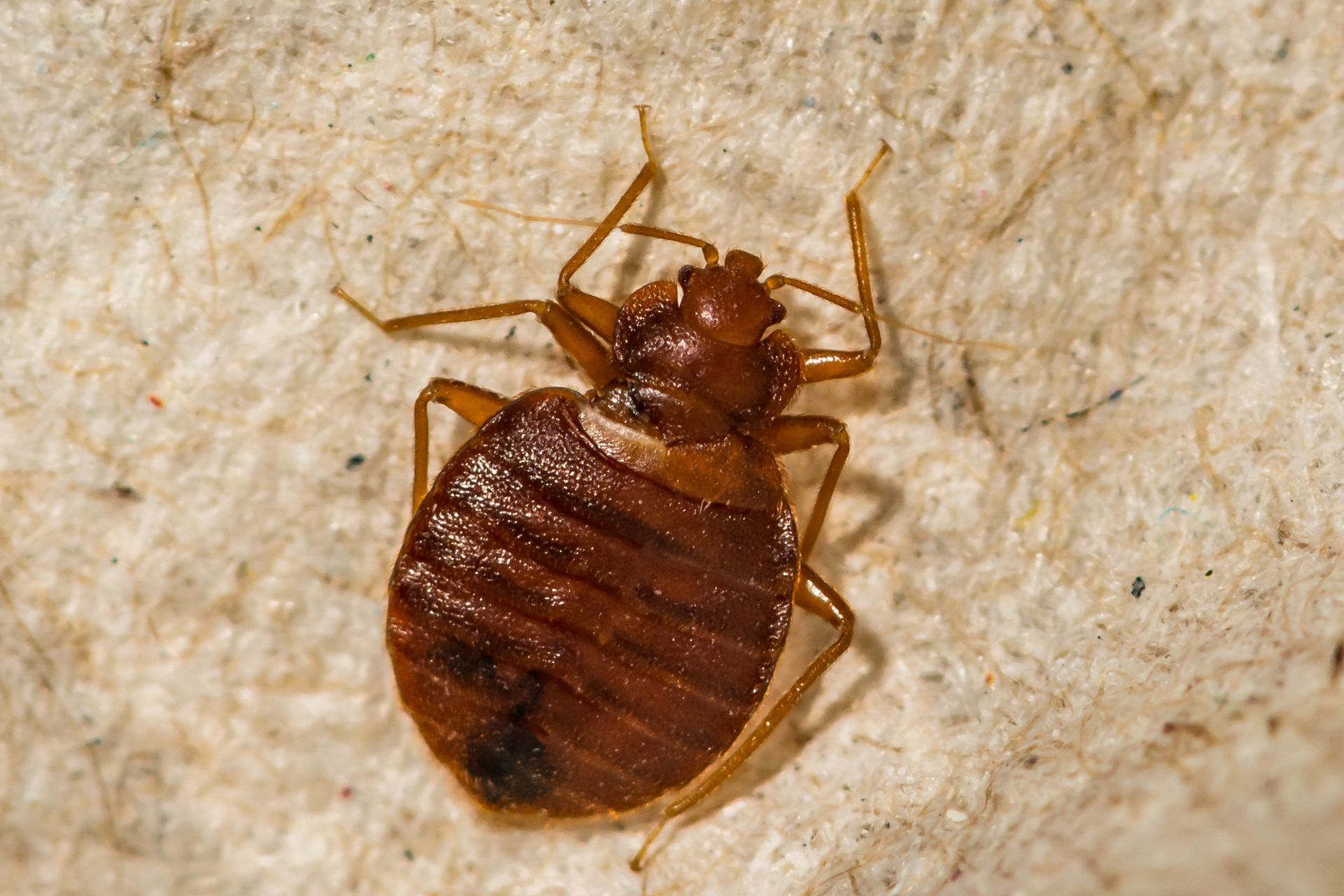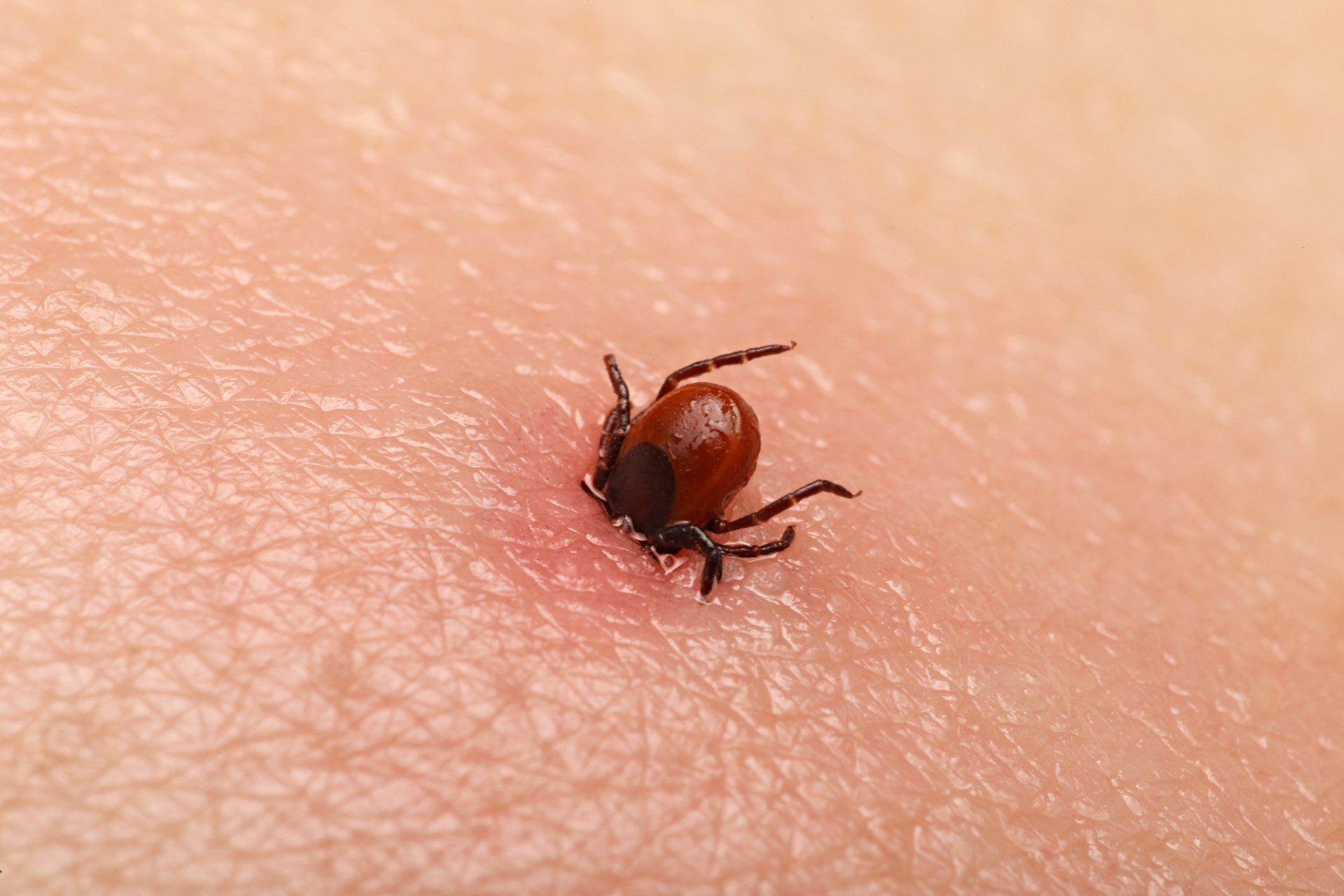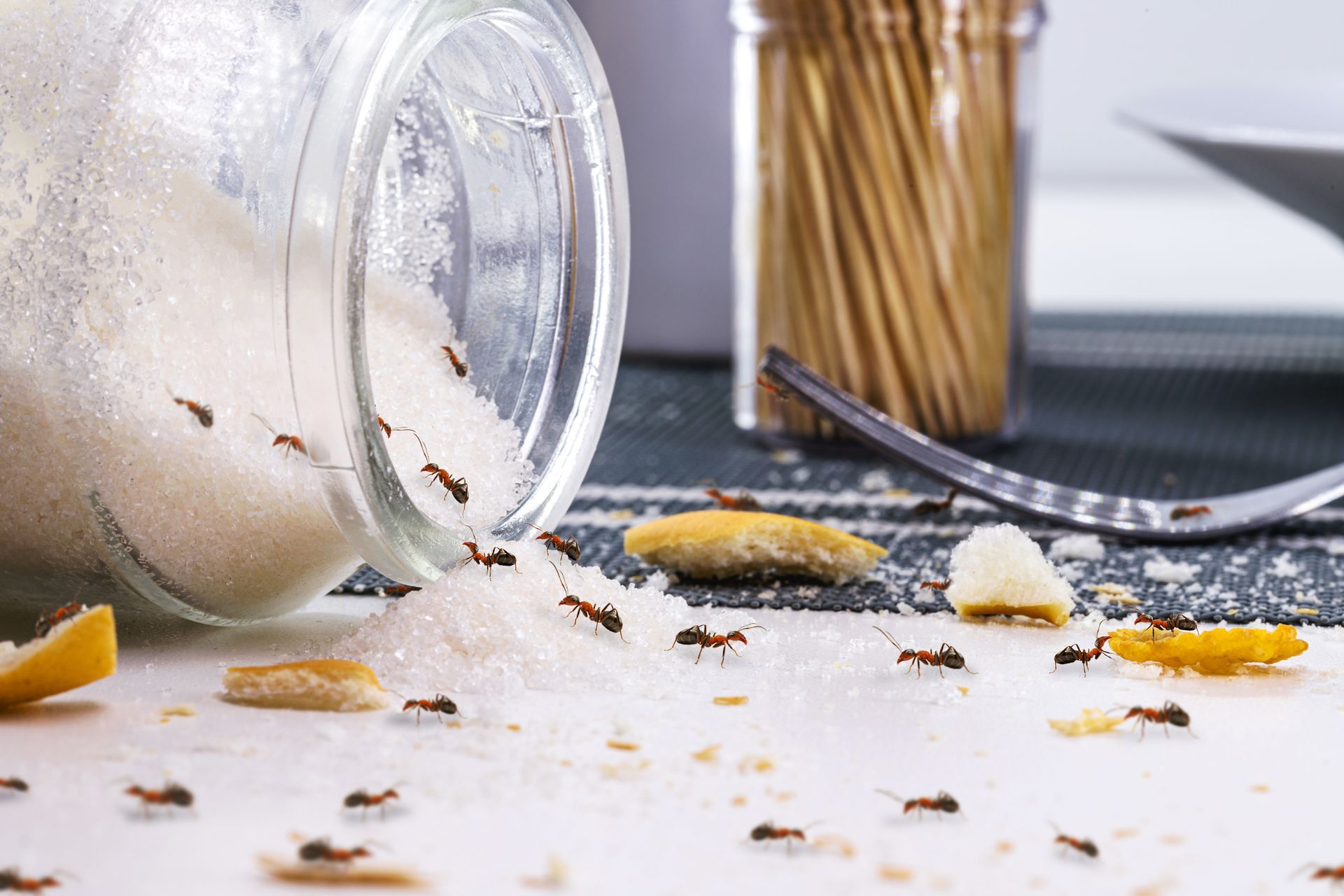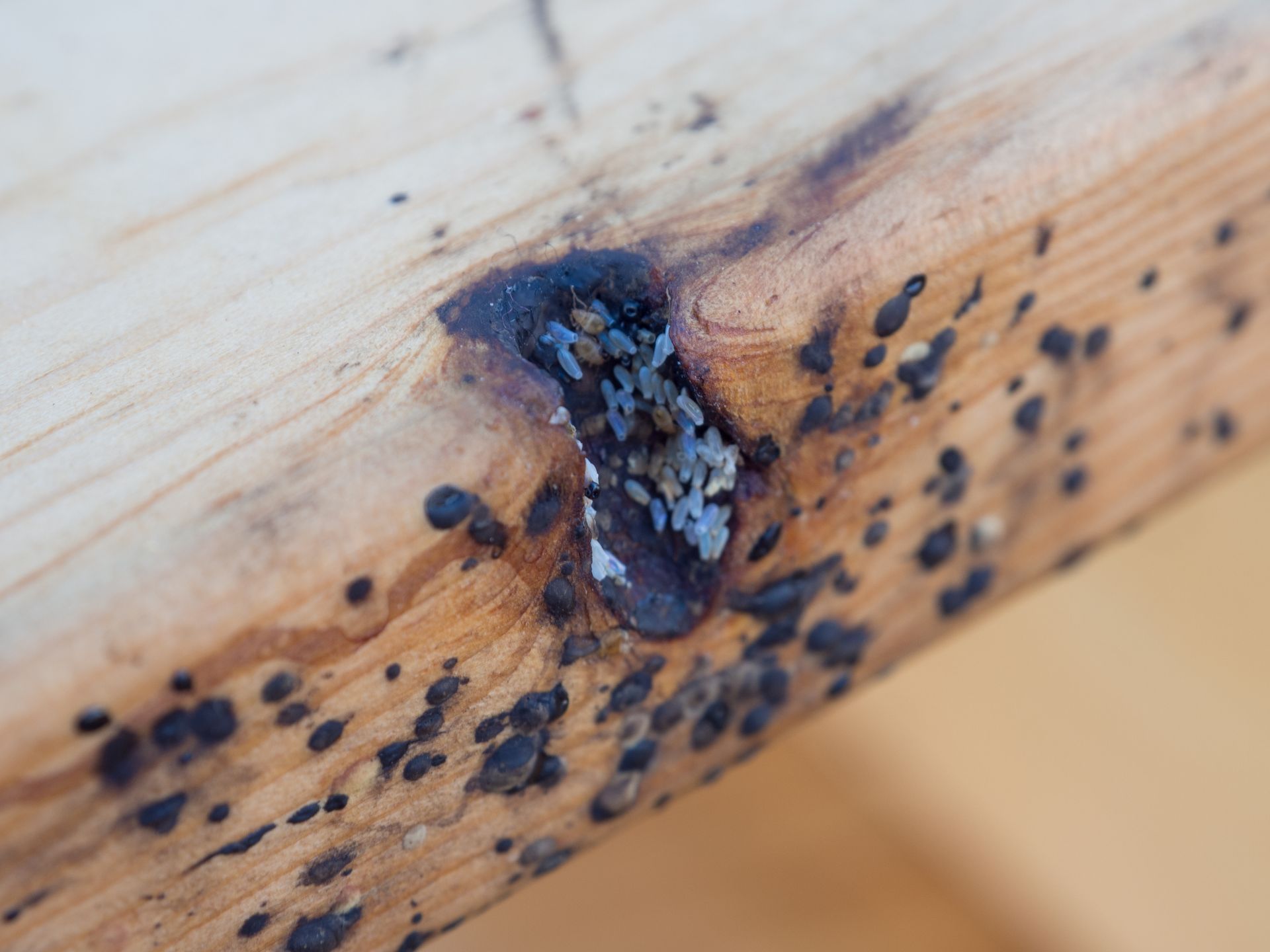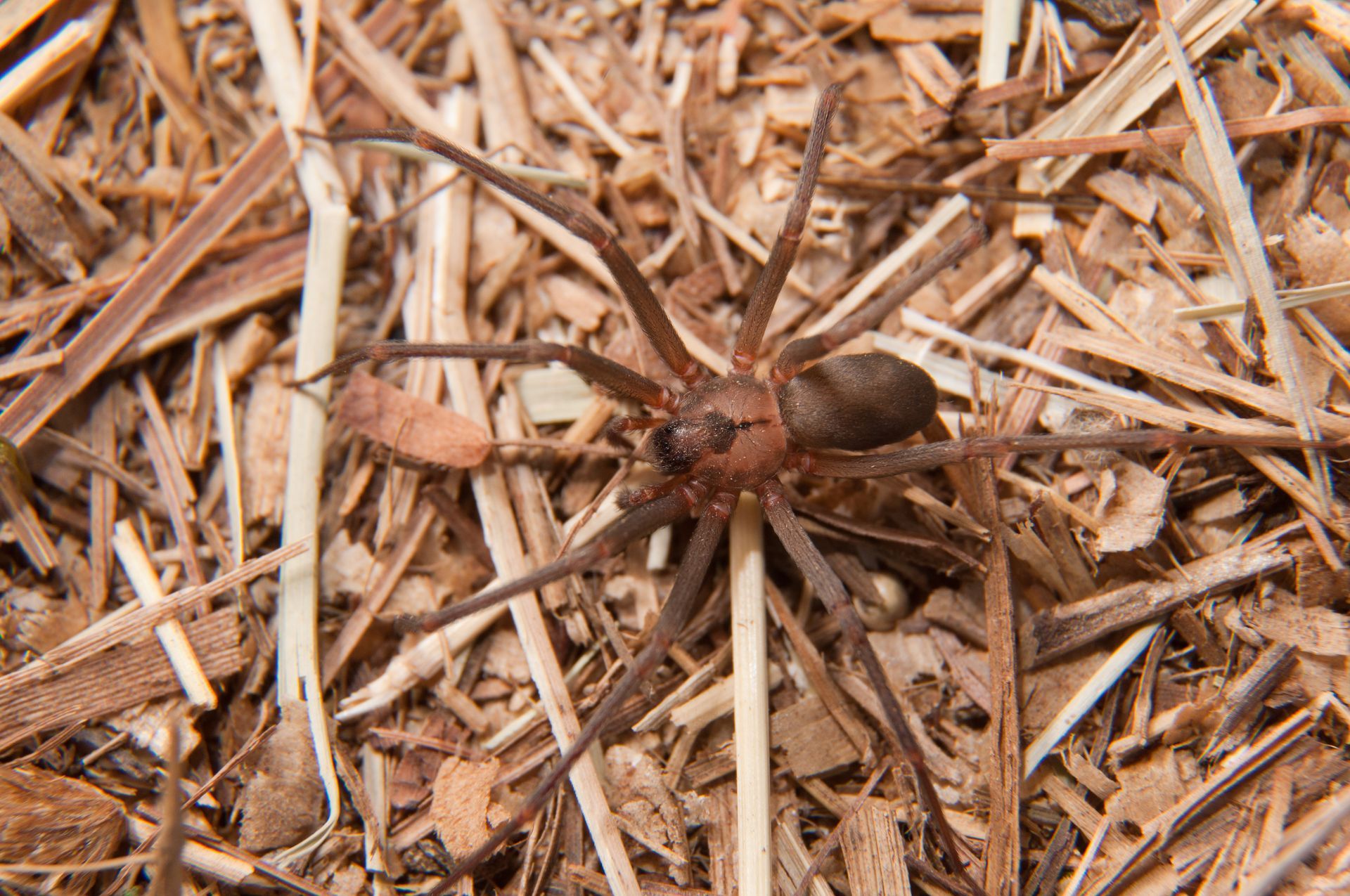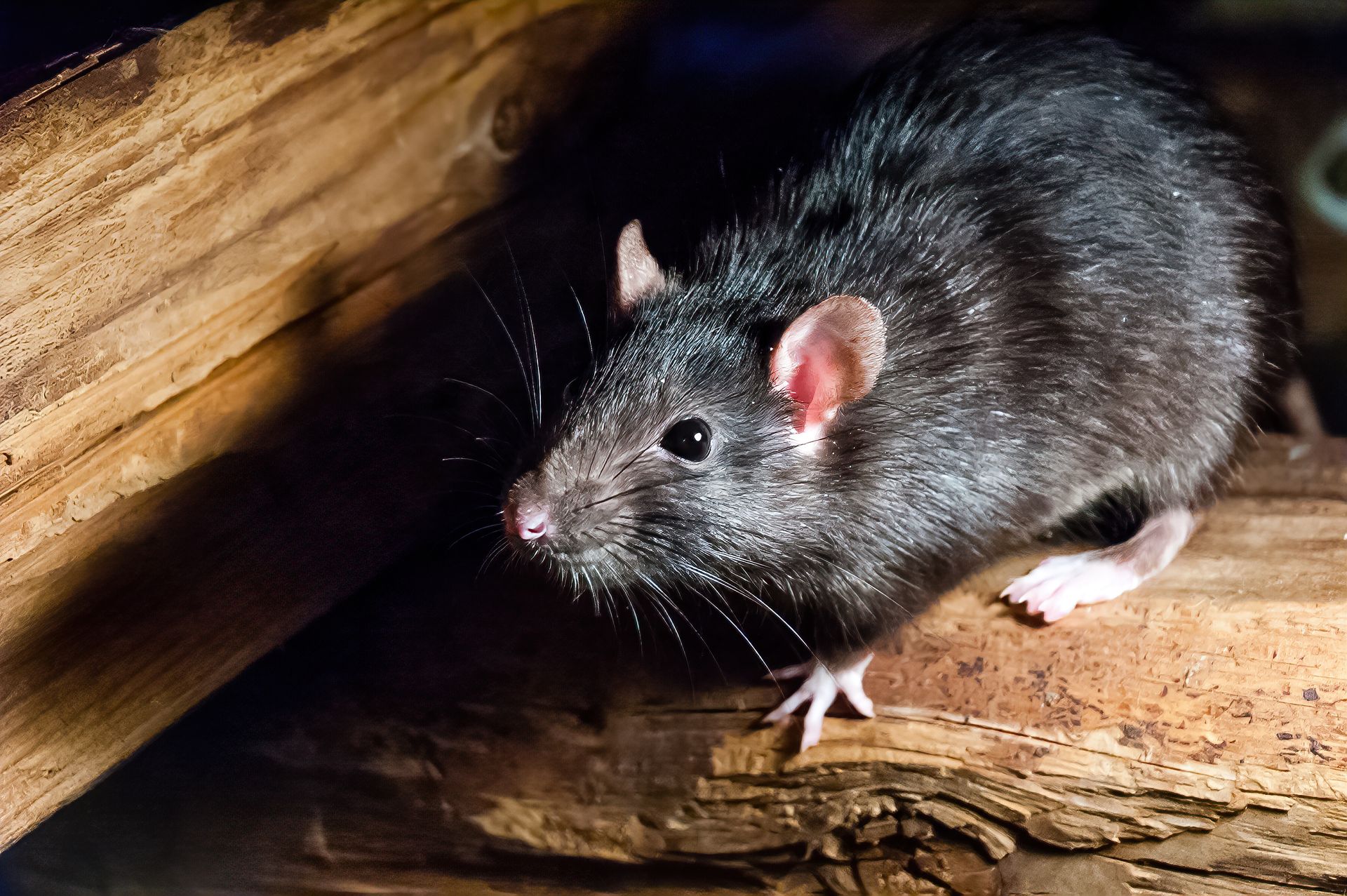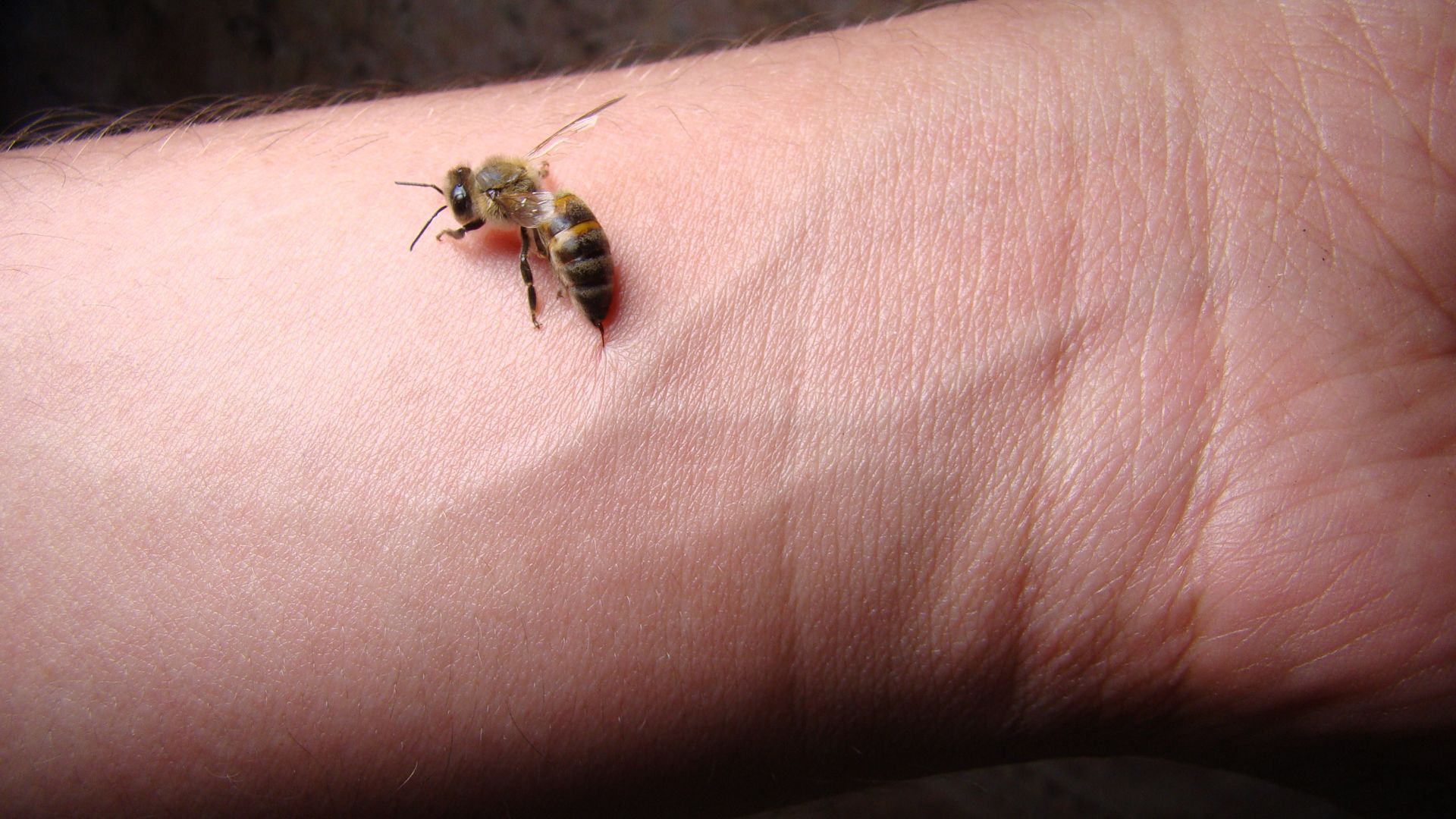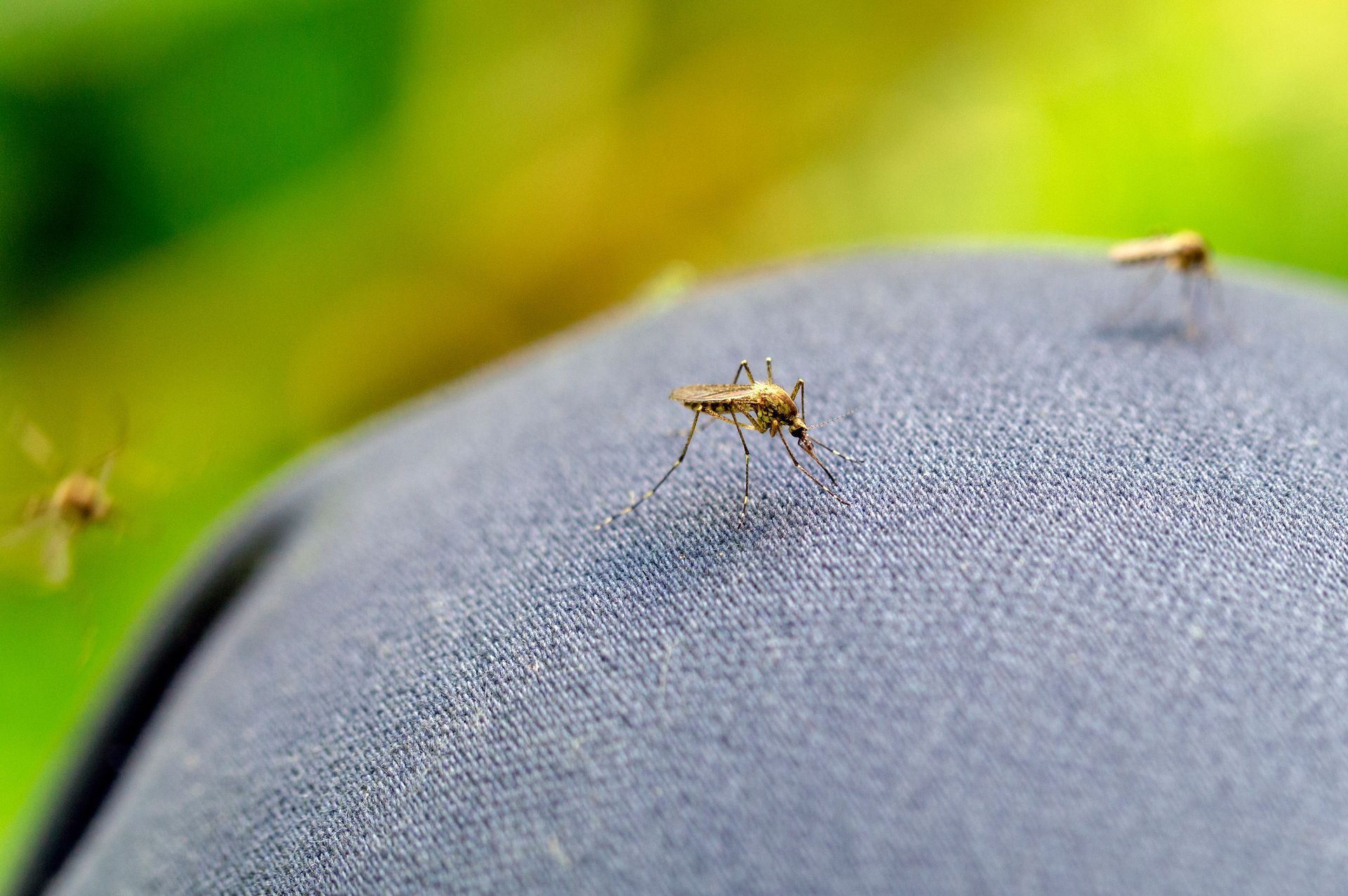Different Types of Flies in North America
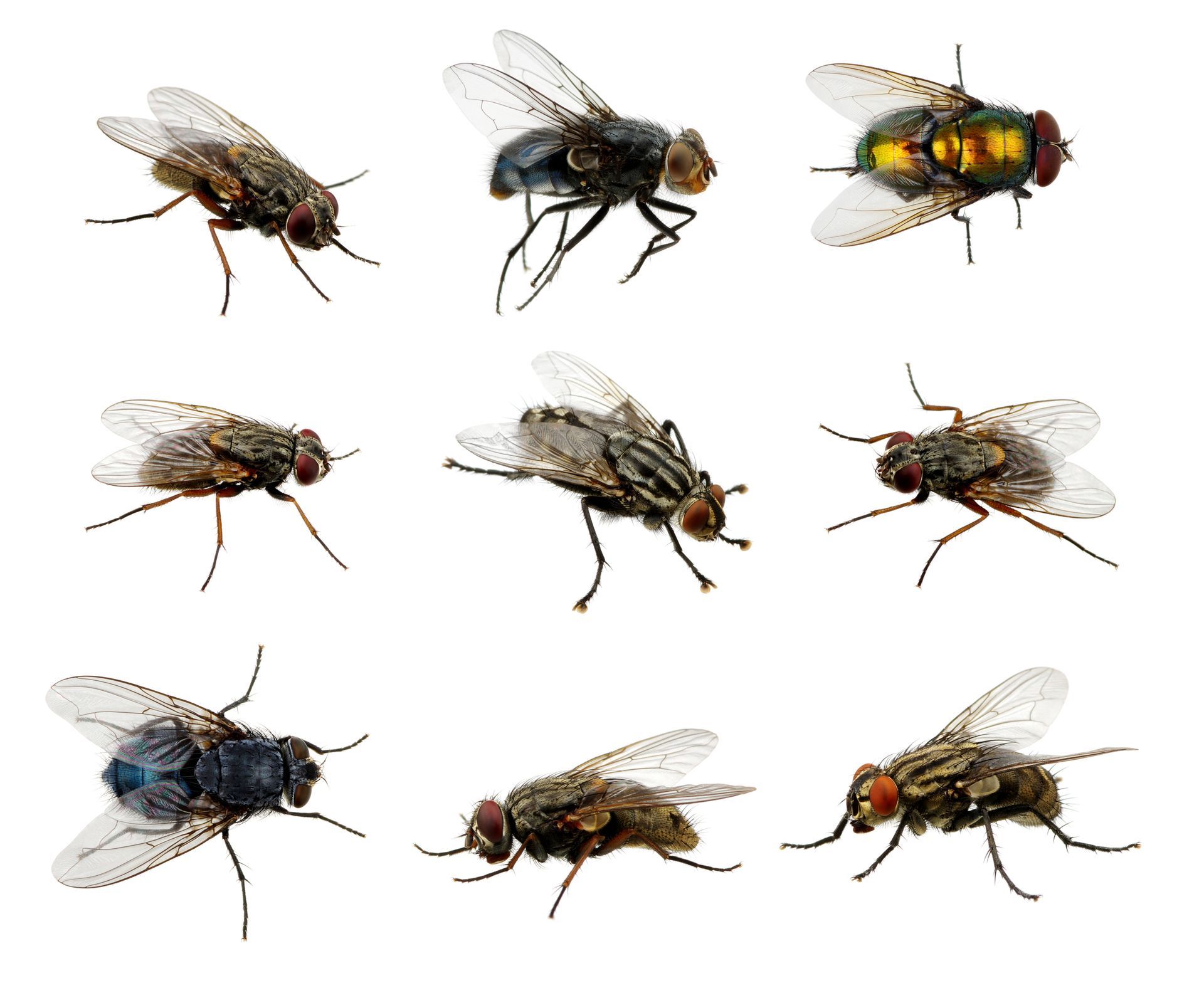
House flies, fruit flies, and drain flies are among the most persistent and common types of flies found in American households. They tend to thrive in populated cities, making them a particular nuisance in dense urban areas. Other flies such as the bluebottle, flesh, and sand flies are attracted to environments that match their natural habitats and lifecycles. By understanding how the different species of flies act and where they hide, we can help implement the most effective fly prevention and control strategies to keep homes safe and healthy.
How Many Species of Flies Are There?
There are currently more than 120,000 different recognized species of flies that exist around the world. That number is likely much larger because it’s estimated that there are many fly species that remain undescribed or undiscovered. There are flies that belong to different families and genera, with some species sharing similar behaviors, such as blood-feeding or breeding in filth.
The concern with flies is that despite their short lifespan, flies can reproduce rapidly which poses a significant threat to public health. The reason this is problematic is because of flies’ ability to spread various diseases, including malaria, salmonella, and tuberculosis. It's important to note that not all fly species are attracted to the same environments, and understanding their habits and behavior is essential for effective prevention and control.
Types of Flies
Flies can be divided into two primary classes: filth flies and flies that bite. Flies that bite include species that feed on the blood of animals and humans which result in painful bites and possible allergic reactions. The most common species in this class include mosquitoes, horse flies, no see ums, and black flies. Biting flies are most active during the day and their bites can be mostly prevented by using insect repellents like DEET or wearing protective clothing.
Flies of filth, like house flies and fruit flies, are attracted to decaying organic matter. They are a threat because they can carry and transmit various pathogens. These flies are often found in areas with exposed garbage or other sources of decaying organic waste. These flies will contaminate food and surfaces with diseases like salmonella and E. coli. Effective control measures include proper sanitation and waste management practices.
Filth Fly Species
Filth flies are a group of fly species that are highly unsanitary and pose a serious health risk to humans. These flies do not feed on blood, but rather on decaying organic matter such as trash, feces, and rotting food. They lay their eggs in these materials, which then hatch into maggots that feed on the same waste. Common filth flies include house flies, drain flies, blow flies, and phorid flies, although there are many other species that fall into this category.
One of the biggest concerns with filth flies is the fact that they can transmit over 100 different diseases to humans. This occurs when they come into contact with contaminated material and then land on food or surfaces where they can transfer pathogens. Effective sanitation measures are crucial in controlling filth fly populations, as eliminating breeding and feeding sources is the best way to prevent their spread.
House Flies
House flies (Musca domestica) are one of the most common types of flies found in and around homes worldwide. Adult house flies are gray with four black stripes on their thorax, measuring about 1/8-1/4” long, and have compound red eyes that provide wider vision. House flies feed on a wide range of substances, particularly human food, animal carcasses, garbage, and pet waste due to its potent odor. House flies do not bite humans or animals, but their contact with infected materials make them a major carrier of disease. They can transfer more than 100 different pathogens, including salmonellosis, E. coli, typhoid, and tuberculosis.
House flies breed in moist decaying organic matter and lay eggs in batches of 120-200 which typically hatch in 8-72 hours. House flies lay eggs that resemble small grains of rice and hatch into larvae, which are also known as maggots. Maggots are cream-colored with a greasy appearance and feed on resources around where the eggs hatched. It can take 3-60 days to mature before they seek out a dark, dry, and cool environment to pupate in. Sometime over the next 3-28 days, the pupae develop legs and wings and emerge as full-grown adult house flies. Mature flies are capable of producing between 350-900 eggs in their lifetime and can start producing eggs almost immediately after reaching adulthood. Adult house flies typically live 15-25 days after reaching maturity.
Little House Flies
Little house flies (Fannia cannicularis) are a type of fly that is smaller than the common house fly but similar in appearance. They are often found indoors, flying for long periods without resting. These flies lay their eggs in rotting or decaying organic matter, where their larvae can feed after hatching. Eggs can often be found in rotting animal carcasses, animal feces, and garbage. They are also commonly found in areas where poultry and livestock are being raised due to the exposure to lots of animal waste byproduct. The life cycle of these flies typically takes about 24 days. It's important to control the presence of these flies, particularly in areas where food is prepared or consumed, as they can carry harmful bacteria and other pathogens that can cause illness.
Fruit Fly
Fruit flies (also known as vinegar flies) are a common household pest found throughout the United States. These flies are <1/8 inch in length and easily one of the smallest household flies. They are light brown with bright red eyes and develop by feeding on rotting fruits and vegetables, as well as yeast in fermenting liquids like beer and wine. They have a short lifespan of 25 to 30 days, during which they can reproduce rapidly. They also breed in unsanitary environments such as drain lines or poorly cleaned garbage containers, making them a potential source of harmful bacteria and disease-causing pathogens. Female fruit flies can lay up to 500 eggs, which can hatch within 24 hours, and the four-stage lifecycle can be completed in as little as a week in ideal conditions. Fruit fly infestations tend to be more frequent in the summer and fall but can occur at any time when suitable sources of food and breeding sites are available.
Bluebottle Fly
Bluebottle flies, also known as blow flies, are metallic blue in color and are attracted to decaying food, dead animals, and pet feces. These flies can carry various diseases, such as typhoid, tuberculosis, and E. coli. The life cycle of a bluebottle fly is relatively short, with the eggs hatching in less than 18 hours, the larvae stage lasting 2-3 days, and the pupae stage lasting around two weeks. Adults reach maturity in about 2 ½ weeks, and then start breeding mostly in organic proteins like decaying or left out meat.
Blow flies are scavengers, so they do not bite or sting humans or animals. They feed particularly on animal-based materials like carcasses and feces. The black blow fly and various bluebottle fly species are commonly found in buildings, particularly during the cool season when they seek sheltered areas. They may also be attracted to odors produced by the decomposition of recently dead animals. Large numbers of blow flies within a home may indicate several accessible entry points, or the presence of an animal carcass in the attic or walls. Blow flies can develop inside carrion or rotting meat, and their larval development is completed in less than a week.
Cluster fly
Cluster flies, also known as attic flies, are distinguishable by their dark grey-olive thorax and a type of blow fly that congregates in large numbers and hibernates during the cold winter months. They lay eggs in the soil in late summer or early autumn. Once the eggs hatch, the larvae will burrow into the ground in search of an earthworm to eat until they are ready to pupate. Reaching maturity can take up to 40 days so adult flies will emerge from the soil for only a short period before needing to prepare for diapause in the winter.
During the cool season, cluster flies typically remain inactive and find places inside to rest like in cavities behind walls. Cluster flies do not feed or reproduce within buildings, and those that move out from their sheltered hiding place usually die within a couple of weeks. Infestation problems occur when the insects enter homes while seeking overwintering sites in attics or wall voids in large numbers, or when they complete their overwintering phase and begin to look for a way to leave the home and return to the outdoors. As it starts to get warmer, cluster flies will become active and swarm towards doors and windows as they look for an exit. Despite the fact that they are a nuisance, cluster flies do not bite humans or animals.
Drain Fly
Drain flies, also known as sewage flies or moth flies, are persistent insects commonly associated with sewage beds where their larvae feed on organic matter. They have a tan-colored body that appears grey and wings that hold a tent-like shape over the body when at rest. Adult drain flies lay anywhere from 30-100 eggs, which hatch in approximately 48 hours. Larvae take between 10 and 50 days to mature, while pupae only take 1-3 days to mature. Adult drain flies have a lifespan of about two weeks. Drain flies are weak fliers and are often found crawling on walls and other surfaces.
Drain flies will mate and lay their eggs in or around moisture or standing water. The eggs will hatch, and the larvae will develop in muck or gelatinous material that accumulates in sewage disposal beds, septic tanks, moist compost, or dirty garbage containers. They may also emerge from sinks, bathtubs, tree holes, rain barrels, moist organic solids, or bird nests that have accumulations of fecal material. They are attracted to light and will be found on glass windows, doors, lamps, and indoor lighting. Although drain flies do not bite people or animals, they originate from filthy sources, and their presence may be linked to a clogged drain. Populations of these insects can become a nuisance in homes, and they have the potential of being vectors of disease.
Fungus Gnats
Fungus gnats are small, dark flies that are commonly found indoors infesting potting mixes used for houseplants. They are also known to breed in mushrooms and other decaying plant materials outdoors. Fungus gnats thrive in environments with high organic matter, and overwatering can increase their development. However, they cause little to no damage to indoor plants and are mostly a nuisance. During fall and winter, fungus gnats are often found collecting around windows.
To control fungus gnats, it is important to reduce watering and allow the soil to dry out between waterings. Removing decaying plant material and cleaning up spills can also help to reduce their numbers. If infestations are severe, insecticides labeled for use on fungus gnats can be used.
Picture Wing Fly
The Picture Wing Fly (Ceroxys latiusculus) is a fly with a distinctive dark band pattern on its wings that is about the size of a house fly. In some areas, these flies can be a common invader of homes that are often found around windows at the start of autumn. Picture wing flies normally do not survive for long indoors, and those that do enter usually die by the end of November.
Picture wing fly larvae develop inside the stems of plants in the aster and sunflower family. While they do not cause any significant harm to humans or animals, picture wing flies can be a nuisance when they enter homes in large numbers. However, they are not a health hazard, and their appearance is usually just a temporary annoyance.
Flesh Fly
Flesh flies, members of the Sarcophagidae family, are named for their tendency to lay their eggs in decaying meat or flesh. They are similar in appearance to house flies but are slightly larger, with light grey thoraxes marked by three dark stripes and spotted abdomens giving a checkerboard appearance. Flesh flies are found in urban and suburban areas but are rarely seen in houses or restaurants.
The lifecycle of flesh flies starts with the larvae, which feed for 3-14 days before moving to drier areas to pupate. They emerge as adults 10-15 days later. Flesh flies do not bite humans or animals, and are often found in decaying wastes, excrement, and human foods.
Phorid Fly
Phorid flies are also known as humpbacked flies due to their distinctive hump on their thorax. They are small flies that are commonly mistaken for fruit flies and are typically found in areas where moisture is present, such as bathrooms, kitchens, and drains. These flies can cause clogged drains and damaged sewer lines, similar to drain flies. The female phorid fly can lay up to 40 eggs in just 12 hours, and the larvae will feed on decaying plant and animal matter for several days before pupating. The adult fly can survive for 1-2 months. While they do not bite humans or animals, they can transmit diseases. If you notice phorid flies in your home, it may be a sign of a larger moisture or sanitation issue that should be addressed to prevent further infestations.
False Stable Flies
The false stable fly (muscina stabulans) is a type of fly that is bigger than the common house fly. It generally appears dark gray without any sharp distinguishing features. Unlike the true stable fly, the false stable fly does not need to bite, however it can spread disease. These flies lay their eggs on slightly spoiled food, animal excrement, and decaying vegetable matter.
They can be found in both urban and suburban areas and may enter homes in search of food or shelter. Proper sanitation and waste management can help to control false stable fly populations, as they are attracted to decaying organic matter. If false stable flies are present in a home, it is recommended to identify and eliminate any potential breeding sites, such as spoiled food or animal feces.
Species of Flies That Bite
There are various species of biting flies that feed on blood. In some species, only females feed on blood, while in others, both males and females do. The mouth parts of these flies also differ depending on their feeding strategies. For instance, mosquitoes use a needle-like proboscis to suck blood, while larger horse flies have slicing appendages that tear flesh. Biting flies are generally more active during warm and humid daytime hours, and they usually lay their eggs in decaying organic material such as mulch or in or near bodies of water.
Some of the most common biting flies include mosquitoes, horse flies, black flies, sand flies, deer flies, and stable flies. These flies can transmit diseases such as West Nile virus, malaria, and Lyme disease. To prevent bites from these flies, it is recommended to wear long-sleeved shirts and pants, use insect repellent, and avoid areas where these flies are most prevalent. Additionally, it is important to eliminate standing water and decaying organic material near homes, as these can serve as breeding grounds for biting flies.
Mosquito
Most people might not know that mosquitoes are flies, but they belong to the same order, Diptera. Despite belonging to the same order, mosquitoes and house flies have different physical characteristics and behaviors. Mosquitoes have a long, thin proboscis that they use to suck blood from their hosts, while house flies have sponging mouthparts and feed on decaying organic matter. Additionally, mosquitoes are known to transmit diseases such as malaria, dengue fever, and Zika virus, while house flies are not known to transmit diseases to humans but can still spread bacteria and other pathogens.
Horse Fly
Horse flies, also known as tabanids, are notorious pests of horses and other mammals. They can be found in both suburban and rural areas near bodies of water where mammal hosts are most abundant. Their eggs are laid in late fall and the larvae develop in soil over the first winter. They typically finish pupating by late spring and early summer and emerge as mature horseflies, which live between 1 – 2 months. Adult horse flies have a gray or blackish body and are 10 to 30 mm long with large eyes that are usually green or purple with horizontal stripes. They are attracted to light and are most active on windless, hot and sunny days.
Female horse flies feed on blood aggressively, while males feed on pollen and plant nectars. Female horse flies require a blood meal before they can reproduce, and their bites can be painful because their mouthparts are used for tearing and lapping up blood, rather than just sucking like mosquitoes. They do not transmit harmful disease-causing bacteria, but their bites can cause allergic reactions. Horse flies are a significant livestock pest with their painful and persistent biting behavior. Heavy numbers of horse fly bites can cause enough stress to lead to reductions in weight gains of beef cattle, and reduced milk yield in dairy cattle. Natural environments for horse flies include freshwater wetlands, saltwater marshes, and open areas within forests.
Deer Fly
Deer flies are blood-sucking insects that prefer to feed on wildlife and livestock but will bite humans too. They are typically found near aquatic habitats that support larval development, such as creeks, streams, and tanks. A few bites from a few of these persistent flies can make any outdoor or recreation activity or chore miserable. Although deer flies do not normally enter buildings, they will occasionally wander indoors.
Female deer flies bite people as well. They will bite any part of the body that is exposed in search of a blood meal. The bites often result in visible bleeding wounds, and general first aid-type skin creams may help to relieve the pain. In rare cases, allergic reactions can occur that result in hives and difficulty breathing. There is a deer fly native to the west coast that can transmit a bacterium that causes deer fly fever and rabbit fever.
Biting Midges
Biting midges, also known as no-see-ums, are small blood-sucking gnats that are considered a significant human pest in coastal areas and farming operations throughout the United States. Female midges require blood to produce eggs and will feed on warm-blooded vertebrates, including mammals, birds, reptiles, and amphibians. Although their bites can cause welts and intense itching, biting midges are not known to transmit diseases to humans in the United States. However, they can transmit diseases to animals, like the bluetongue virus, which causes serious diseases in sheep and cattle.
No see ums breed in coastal salt marshes, muddy flatlands, and areas with freshwater. Breeding places are generally shaded areas along the edges of grass marshes where they can find decaying leaves that are kept out of the sun. Adult midges lay eggs in moist or wet organic matter like mud, rotting leaves, fresh manure, and other shaded vegetation. Adult biting midges are grayish black with a pigmented pattern on their wings, have six legs and antennae, and are less than ⅛ inch in size.
Black Flies
Black flies, also known as buffalo or turkey gnats, are small blood-sucking insects found in many parts of the United States and Canada. Only the female flies feed on blood, and their bites can cause a range of reactions that most commonly include small puncture wounds and swelling at the bite, but can also result in rashes, headache, nausea, fever, and swollen lymph nodes.
Black flies measure 1 to 5 mm and have a black body with some gray and possibly reddish color. Male flies feed on nectar, while females require a blood meal before producing eggs. Black flies lay eggs on objects in moving water, such as rocks. Black flies need to breed exclusively in running water because the immature stages require oxygenated water sources to develop properly.
Stable Fly
The stable fly is an outdoor pest that feeds on domesticated animals and has a pointed beak with which it pierces skin and sucks blood. Although it can enter houses during rainy weather, it is more important as a pest and disease vector in livestock and domestic pets. The stable fly resembles the house fly but can deliver a painful, irritating bite to humans as well. To control stable fly maggots, it is recommended to dispose of stable manure, urine-soaked straw, moist spilled feed, and moist decaying vegetation like lawn clippings or decaying seaweed washed up on shores and beaches each week.
Stable flies are a significant concern for livestock and domestic pets as they can cause discomfort, stress, and reduced productivity. Stable flies are known to carry pathogens that can cause diseases in animals, such as bovine anaplasmosis, equine infectious anemia, and canine heartworm. In addition to causing problems for animals, stable flies can also be a nuisance for humans, particularly in outdoor areas where they are present in high numbers. Effective control measures for stable flies include removing breeding sites, such as manure and decaying vegetation, and using insecticides and fly traps to reduce the adult fly population.
Sand Fly
Sand flies (spiriverpa lunulata) are small, biting insects that are commonly found in sandy areas such as beaches, riverbanks, and wetlands. Sand flies become active when it gets dark and stay active through the night. Sand flies lay their eggs in damp soil or water, and the larvae mature in about three weeks.
Adult sand flies are typically ⅜” to almost ½” long, with a pale grey body, bronze-brown eyes, and dark reddish-brown legs. They are most commonly found in open habitats without shading trees, as well as in rock crevices and rodent burrows. Their bites can transmit diseases such as sand fly fever so to protect yourself from sand fly bites, it is recommended to wear long-sleeved shirts and pants, use insect repellent containing DEET, and avoid being outdoors during the evening and nighttime hours when sand flies are most active.
Preventing Flies
Preventing flies indoors requires proper sanitation practices like:
- regularly removing trash
- keeping counters clean
- disposing of food properly
- ensure all windows and screens are in good condition
- staying on top of pet waste removal
If a fly infestation is suspected, it may be time to enlist the support of a licensed pest control professional to conduct an inspection. An experienced exterminator can look for potential breeding grounds and create a fly treatment plan specific to the infestation. By taking these preventative measures and seeking professional help if needed, homeowners can effectively prevent and eliminate fly infestations.
Managing an Indoor Fly Infestation
Identifying the type of fly is important when dealing with an indoor fly infestation. Without understanding the behavior and environment of the target pest, treatment and prevention strategies won’t be as effective. For example, fruit flies are typically attracted to overripe or rotting fruit, while house flies are more attracted to garbage and animal waste. Fly identification makes locating and treating breeding and feeding sites much easier. This includes cleaning up any food spills or crumbs, taking out the trash regularly, and properly storing food in sealed containers.
Traps and baits should also be used to manage an indoor fly problem. Fly paper, sticky traps, and bug zappers can be effective in eliminating flies, while baits containing poisons targeted at flies can help reduce the fly population. It is important to carefully follow the instructions on the products and keep them out of the reach of children and pets. If the infestation persists, it may be necessary to contact a licensed pest control professional to develop a treatment plan.
Preventing Flies by Keeping Things Clean
To prevent indoor fly infestations, the most important step is to eliminate the sources of food on which they feed. This requires putting all fruit in the refrigerator for a week so any remaining fly larvae can die off. Discarded fruits and vegetables should be promptly disposed of outdoors, and used beverage containers should be thoroughly rinsed before being discarded. Trash cans should come with lids to prevent flies from accessing them and trash should be taken out regularly to covered bins outside. Fungus gnats can be controlled by allowing the plant soil to completely dry between watering cycles. It also helps to eliminate decomposing plant materials.
Moth flies and humpbacked flies breed within drains and can be managed by scraping the slime or lodged food waste off with a bristled brush. Drain cleaners designed to eliminate these buildups can also be used to kill off any drain flies. Drain flies may also develop in sites where there are cracks in plumbing or anywhere water from leaking sources may saturate areas like walls and floors. If this occurs, then these moisture sources must be dried out. By following these steps, it is possible to prevent and manage indoor fly infestations.
Keep Flies Out by Sealing Access Points
Sealing access points is an important step in preventing indoor fly problems. This includes tight-fitting screens on doors and windows to prevent flies from entering the home. However, it's also essential to seal cracks and crevices around windows, under soffits, and around ventilation openings that allow flies to enter the building. Failure to do so may lead to fly infestations, particularly with flies that develop outdoors and use homes for temporary shelter.
Exclusion techniques can also prevent flies from accessing food. This includes sealing garbage cans tightly, covering foods and beverages properly, or storing susceptible foods in a refrigerator to limit flies that breed in these materials. Cluster flies are particularly problematic during late winter and spring when they enter buildings for winter shelter. To prevent future problems with winter flies, all sealing and caulking activities should be done by the end of August, before the insects start to filter into cavities behind walls.
Using Traps to Capture Flies
Traps can be an effective tool to capture some types of indoor flies but should not be relied on as the sole method of control. Small fruit flies can be trapped using a simple jar with a paper cone over the top and a bait such as cider vinegar, red wine, or mashed banana/beer mixture in the bottom. Commercial traps are also available for purchase. Food-based traps with various lures are also available, but the type of lure used is important in attracting the right type of fly. For example, house flies are attracted to sugar/yeast-based baits, while blow flies are more attracted to protein-based or ammonium carbonate baits.
Lights that produce wavelengths attractive to certain flies can also be used to capture them on a sticky surface or electrocute them, but "bug zapper" traps should not be used near areas where food is prepared or consumed due to the risk of contaminating the area. Sticky fly paper strips can be effective for capturing house flies but may not be effective for other types of flies. Finally, some chemicals have been shown to have repellent properties against flies, but their effectiveness varies depending on the species of fly.
Contact EcoGuard Pest Management if You Are Dealing with a Fly Problem
If you're a homeowner dealing with fly problems, EcoGuard Pest Management could be a great option for you. Their integrated pest management approach aims to eliminate current pest problems while preventing future infestations. EcoGuard uses eco-friendly pest control methods that are safe for your family and pets, and they offer a satisfaction guarantee. With their experienced technicians and commitment to customer service, EcoGuard could be a reliable solution to help you get rid of your fly problem. Call today to schedule an inspection with one of EcoGuard’s experienced fly control experts.
Fly Species FAQs
-
How do I identify a type of fly?
Identifying the species of fly can be difficult due to the size of these insects but each species has different physical characteristics and behaviors. One approach is to observe the fly's size, color, wing shape and pattern to identify the species. The fly's habitat, feeding behavior, and breeding sites can also provide clues about its species. The easiest way would be to let a pest control professional assist in identifying the fly species so they can develop an effective control strategy.
-
What are the most common flies?
The most common flies found in American households include the house fly, fruit fly, mosquito, drain fly, cluster fly, and phorid fly. These species of flies are attracted to different foods and require different environments for breeding.
Request A Free Estimate
We will get back to you as soon as possible
Please try again later
Immediate Service Available
Services
Customer Care
Legal
Working hours
- Mon - Sun
- -
All Rights Reserved | EcoGuard Pest Management | All Phone Calls Recorded | By Using Website You Agree To Terms Of Use



